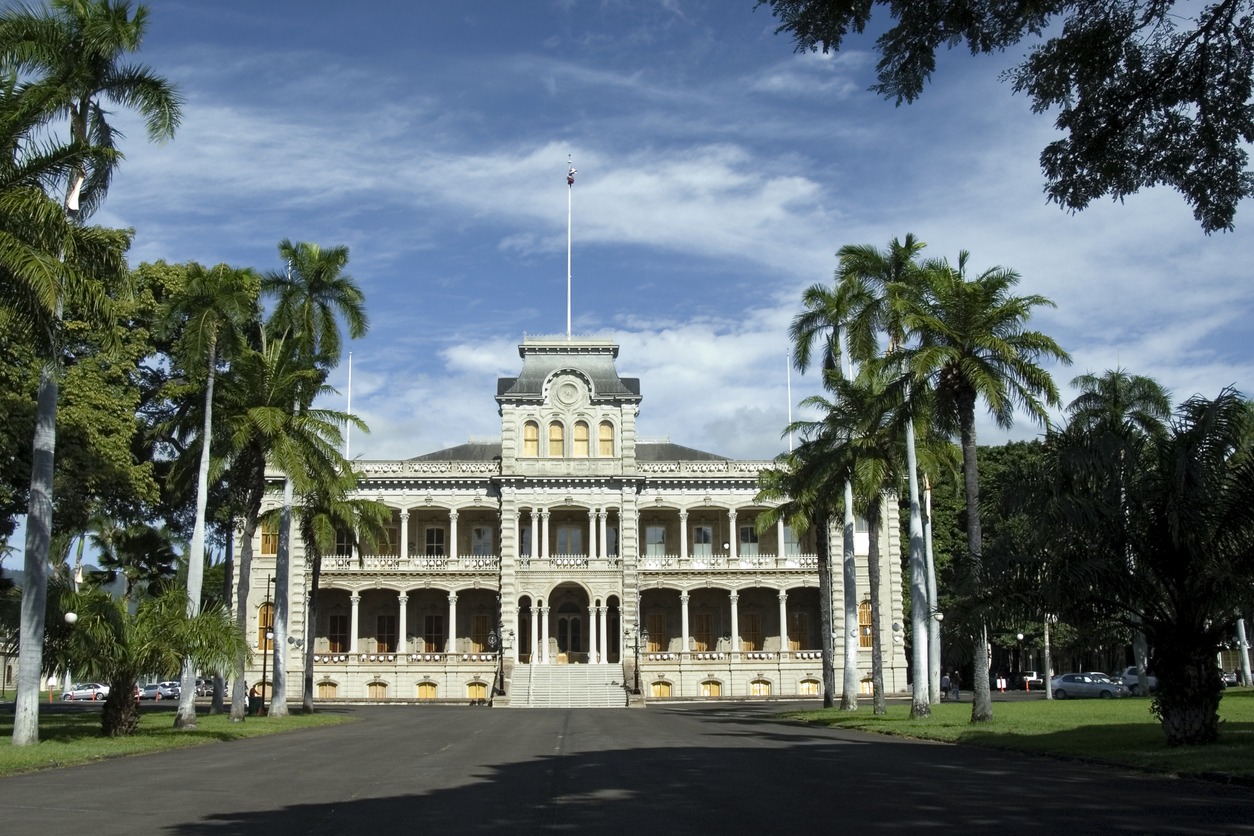One of Hawaii’s historic sites is the Iolani Palace (Hale Alii Iolani). Hale Alii means House of the Chiefs and Iolani means Royal Hawk in Hawaiian. It is currently a museum, although it was previously the Hawaiian Royal Family’s palace and served as the capitol before the monarchy abolished.
It is situated in Honolulu, Hawaii, and has a land area of 10.6 acres. It is listed on the US National Register of Historic Places.
Its History
Mataio Kekuanaoa, the governor of the island of Oahu, conceived the idea for the project when he decided to build Crown Princess Victoria Kamamalu a sizable Greek-revival style mansion in 1844. The original materials for the building were wood and stone, both of which are abundant in Hawaii. The palace’s initial design is simple and more akin to a mansion than a palace, yet it was the finest at the time, and was constructed right adjacent to the Pohukaina (holy mound), an ancient burial ground of Hawaii’s kings and chiefs.
Later, in 1845, Kamehameha III acquired the land and property from Kekuanaoa, and he gave it the name Hoiho Ikea. However, the palace was renamed and named after Kamehameha IV, whose full name was Alexander Iolani Kalaniualiholiho, during the reign of Kamehameha V.
When Kalakaua took the throne, he ordered the entire palace to be burned down owing to termite infestation. Because the monarch enjoys traveling to different nations, the new design of the palace was inspired by what he witnessed in European structures. Architects Thomas J. Baker, Charles J. Wall, and Isaac Moore took charge for its design. It was constructed in 1879 in the American Florentine architectural style. An estimated $340,000.00 was spent building the new royal residence, which is composed of brick and concrete. This is the only royal palace on American land.
The palace was equipped with electricity in 1887, also during Kalakaua’s reign.
When the monarchy was abolished in 1893, Queen Liliuokalani was held captive by US Marines in the upstairs bedroom for 8 months. The area is now referred to as the imprisonment room. The queen wrote songs about patriotism and farewell, such as Aloha Oe.
After this, the former palace served as the capitol building. It was designated as the Territorial Government’s Capitol. The belongings, decorations, and furniture inside the palace were auctioned off.
The Iolani Palace had another remodeling in 1930, this time replacing its timber columns with steel and reinforced concrete. Additionally, some efforts were made to bring back the palace’s former splendor. This comprises the work of experts and researchers as well as donations from benevolent individuals. The palace’s auction goods were also returned. Some persons who purchased artifacts volunteered to return them to the palace.
Visiting Iolani
Iolani Palace is now accessible to the public as a museum and tourist destination. The Grand Hall, Coronation Pavilion, State Dining Room, library, Grand Staircase, Blue Room, King and Queen’s Suites, Throne Room, Lanai, basement, Imprisonment Room and Music Room are a few areas of the palace that are accessible to the general public.
If you intend to visit Iolani Palace, make arrangements in advance. It is best to search through travel websites or the Iolani website for information and reference as schedules and costs are subject to change without prior notice.
Visiting Protocols for Iolani Palace
There are various rules that tourists and visitors must abide by for the protection of the guests, the palace’s architecture, artifacts, and the equipment inside the palace. Some of these are posted and shown on signs. The tour guides will announce these key protocols as soon as the tour begins. It’s always a good idea to plan ahead of time when it comes to dress requirements. If the etiquette is broken, you may be denied entrance to the palace.
- Extended lenses, tripods and monopods are not permitted inside the palace.
- Pictures and still photographs may be shot both inside and outside the palace, however flash cameras and video and audio recording devices are not permitted. To preserve the peaceful atmosphere and serenity of the area, make sure your mobile phones’ tones are off.
- Proper dress code must be observed all the time. Beachwear and low-cut tops, other lewd clothing are strictly prohibited when visiting the palace.
- Put on fabric booties or shoe covers before entering the palace. The palace’s stewards will supply shoe covers for everyone.
- Food and drink cannot be brought into the palace.
- Backpacks must be worn in front, and strollers and other large bags are not permitted within the royal residence.
- Children are welcome to enter the palace. Baby strollers must be provided by the royal stewards because personal strollers are not permitted on the grounds of the palace. Children who are rowdy and unruly are sent outside.
- Because the Hawaiians regard Iolani as sacred, avoid being boisterous, disruptive, or making any needless movements when inside.
- The Grand Staircase cannot be scaled under any circumstances. Use the elevator to get to a different floor.
- Both smoking and drinking are prohibited both inside and outside the palace.
- It is best to follow the signage because the palace is over a hundred years old and has sections and items that are delicate and in a restored and maintained state. For instance, the roped areas, where you are not allowed to proceed, sit, or ascend.
- Do mind your manners. Pay attention to local traditions.
- Bringing a bladed weapon or anything of the like inside is strictly prohibited.
Conclusion
The historical significance of Iolani makes a trip there worthwhile. Be prepared if you intend to visit. It is also much better if you research about the area first, specifically the protocols being followed. Expect more stringent rules to be followed than at regular tourist attractions as this is a royal palace.
